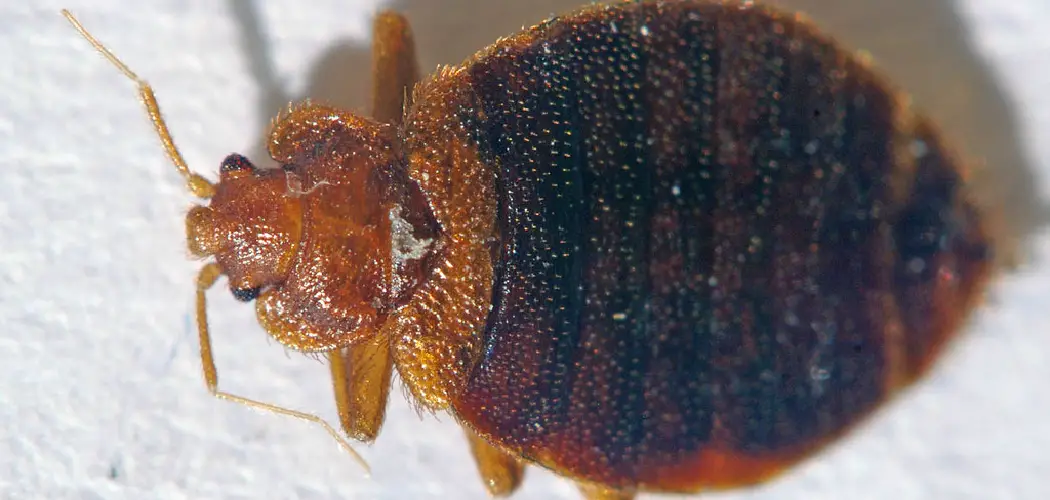Bed bugs can be an unwelcome intrusion in any home, and their presence on your sofa can be particularly distressing. These tiny, nocturnal insects are adept at hiding in small crevices and can quickly become a significant problem if not addressed promptly.
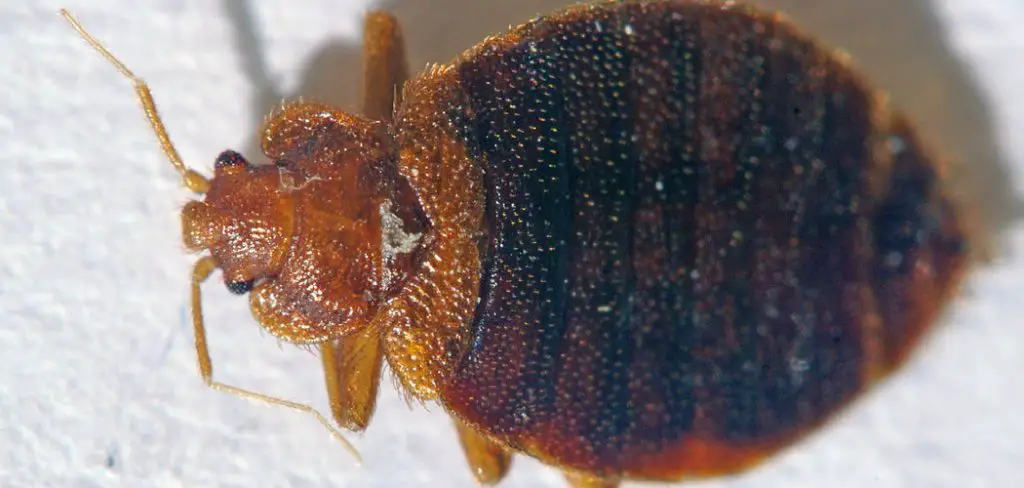
Understanding how to effectively treat your sofa for bed bugs is crucial to ensuring a comfortable and pest-free living environment. This guide on how to treat sofa for bed bugs will provide you with essential steps and tips on identifying, treating, and preventing bed bugs in your sofa, helping you regain peace of mind and a restful home.
Why Treat Your Sofa for Bed Bugs?
Bed bugs are notorious for their ability to multiply rapidly, making it essential to treat any potential infestations promptly. While they may not carry any known diseases, bed bug bites can cause unpleasant symptoms such as itching and swelling.
In addition, bed bugs can spread throughout your home, hiding in other furniture and even clothing, making them challenging to eliminate once they have established a foothold.
Furthermore, the longer you delay treatment for bed bugs on your sofa, the more likely they are to spread and become an even bigger problem that requires costly professional intervention.
Needed Materials
Before you begin treating your sofa for bed bugs, it is essential to gather the necessary materials. These include:
- Vacuum Cleaner With Attachments
- Steam Cleaner
- Plastic Mattress Covers (if Treating a Pull-out Sofa Bed)
- Bed Bug Spray or Powder
- Rubbing Alcohol or White Vinegar
- Hot Water and Detergent
It is crucial to use caution when using any chemicals, especially if you have children or pets in the house. Consider using natural alternatives or consult a professional if you are unsure about any products.
8 Step-by-step Guidelines on How to Treat Sofa for Bed Bugs
Step 1: Inspect Your Sofa for Bed Bugs
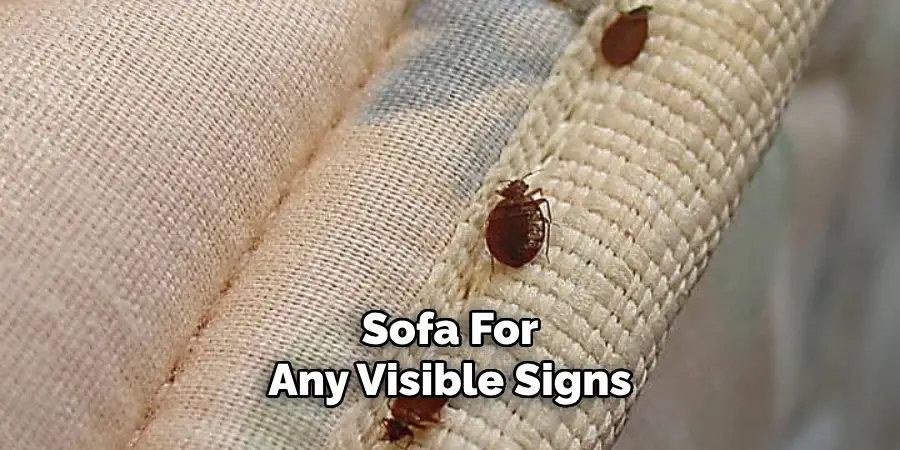
Begin by thoroughly inspecting your sofa for any visible signs of bed bugs. Carefully check the seams, cushions, and crevices where these pests are likely to hide. Use a flashlight to examine dark areas and a magnifying glass, if necessary, to spot the tiny insects or their eggs. Look for dark spots, which could be bed bug feces or shed skins that indicate an infestation.
Additionally, check for any small red stains, which might be an indication of crushed bugs. Conducting a meticulous inspection is crucial for determining the extent of the infestation and planning the subsequent treatment steps.
Step 2: Remove and Clean All Bedding
If your sofa has removable cushions, pillow covers, or throws, take them off and launder them in hot water with detergent. This will help kill any bed bugs and their eggs that may have found their way into the fabric. If the cushion covers are not machine-washable, consider using a steam cleaner to treat them thoroughly.
But be sure to take safety precautions and follow the manufacturer’s instructions when using a steam cleaner. Additionally, any throw pillows or blankets that cannot be washed should be placed in a hot dryer for at least 30 minutes on high heat.
Step 3: Vacuum Thoroughly
Using a vacuum with attachments, thoroughly vacuum your sofa, paying special attention to seams, crevices, and folds where bed bugs may hide. This will help remove any live bugs and their eggs from the surface of your sofa. Afterward, empty the contents of the vacuum into a plastic bag and dispose of it outside immediately.
You may also consider using a vacuum with a HEPA filter, which can help trap smaller bed bugs and their eggs that traditional vacuums may miss.
Step 4: Use Steam to Treat Your Sofa
Steam is an effective method of killing bed bugs and their eggs. Using a steam cleaner, go over your entire sofa, making sure to reach all the seams, folds, and crevices. The heat from the steam will kill any bed bugs on contact.
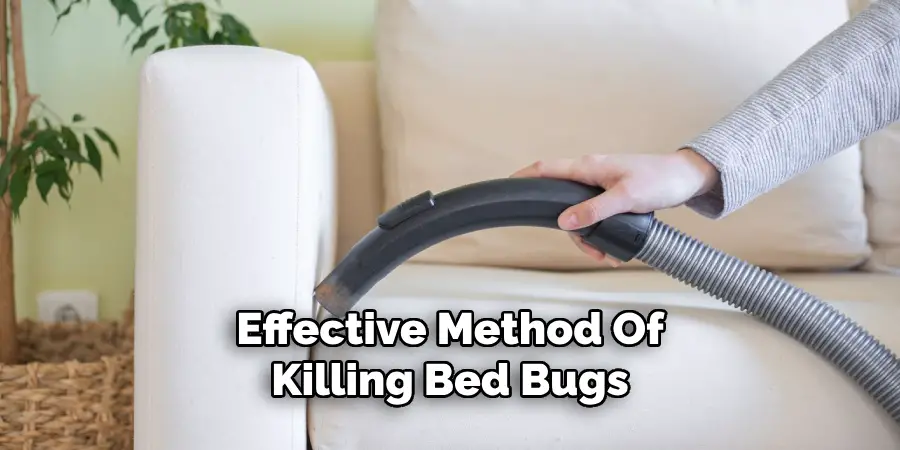
However, keep in mind that it may take several passes with the steam cleaner to cover all areas thoroughly.
Step 5: Apply Bed Bug Spray or Powder
After steaming, apply a bed bug spray or powder that is specifically designed for use on furniture. Check the product label to ensure it is safe for sofas and follow the manufacturer’s instructions closely. Begin by lightly spraying or dusting the product onto the affected areas, including all seams, crevices, and any other places where bed bugs may hide. Be thorough in your application, but avoid overusing the product, as this can contribute to unnecessary chemical exposure.
Allow the treatment to sit for the recommended duration before proceeding. Always ensure the room is well-ventilated during and after application to prevent inhalation of any potentially harmful fumes.
Step 6: Use Rubbing Alcohol or White Vinegar
If you prefer a natural approach to treating your sofa for bed bugs, consider using rubbing alcohol or white vinegar. Both of these substances are effective at killing bed bugs on contact and can be safely applied to furniture.
Using a clean cloth, lightly dampen it with rubbing alcohol or vinegar and wipe down your sofa thoroughly. Pay special attention to seams, crevices, and any other areas where bed bugs may hide. Allow the solution to dry before resuming the use of the sofa.
Step 7: Cover Your Sofa with Plastic Mattress Covers
If you have a pull-out sofa bed that is infested with bed bugs, consider covering the mattress with a plastic cover. This will help prevent bed bugs from accessing the inside of the mattress, making it easier to treat. It is crucial to use a cover that completely encases the mattress and does not have any gaps.
The cover should also be left on for at least a year to ensure that any remaining bed bugs or eggs are eliminated before removing it.
Step 8: Monitor and Repeat Treatment if Necessary
After completing all the steps above, continue monitoring your sofa for any signs of bed bugs. If you notice any activity or new bites, you may need to repeat some of the treatment steps.
Additionally, it is essential to take preventive measures such as regularly vacuuming and inspecting your sofa and avoiding bringing in used furniture or items from infested areas to prevent re-infestation.
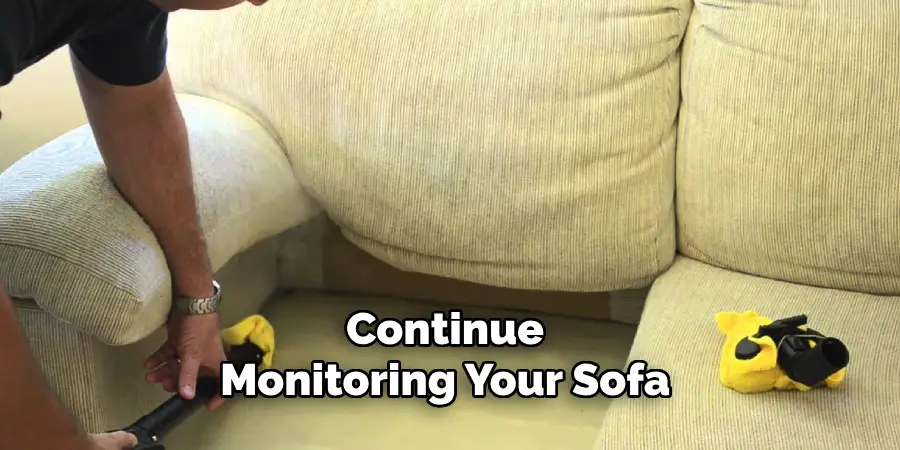
Following these steps on how to treat sofa for bed bugs and being diligent with preventive measures can help effectively treat your sofa for bed bugs and keep your home pest-free. Remember to always prioritize safety when using any chemicals or equipment, and consider consulting a professional if you are unsure or the infestation is severe. Happy treating!
Additional Tips
- If possible, place bed bug interceptors under the legs of your sofa to prevent any remaining bed bugs from accessing it.
- Consider using a mattress encasement for your pull-out sofa bed as an added precaution against infestation.
- Regularly inspect and clean all areas where pets may sleep or spend time, as they can also carry and spread bed bugs.
- Avoid using foggers or bug bombs, as these can be hazardous and are not effective in eliminating bed bugs on furniture.
- When traveling, thoroughly inspect any used furniture before bringing it into your home to avoid introducing new infestations.
- Always follow up with preventive measures even after successfully treating your sofa for bed bugs to ensure long-term protection.
Frequently Asked Questions
Q: Can Bed Bugs Survive on a Sofa?
A: Yes, bed bugs can easily infest and survive on sofas or other upholstered furniture. It provides them with multiple hiding spots and easy access to their blood meal (humans).
Q: How Long Does it Take to Treat a Sofa for Bed Bugs?
A: The treatment time can vary depending on the severity of the infestation and the methods used. It is recommended to conduct multiple treatments over several days for best results.
Q: Can I Use Insecticides on My Sofa?
A: Yes, there are insecticides specifically formulated for use on furniture that can be effective in treating bed bugs. However, always follow the manufacturer’s instructions and take necessary safety precautions.
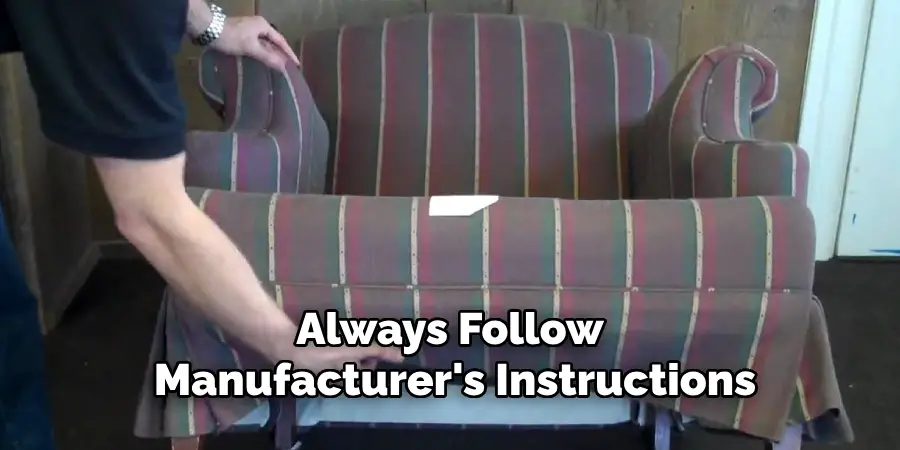
Q: Do I Need to Throw Away My Infested Sofa?
A: Not necessarily. With proper treatment and preventive measures, it is possible to eliminate bed bugs from a sofa. However, if the infestation is severe or the sofa is heavily damaged, it may be necessary to dispose of it and replace it. Consider consulting a professional for advice in this situation.
Q: How Can I Prevent Bed Bugs on My Sofa?
A: Regularly vacuuming your sofa, avoiding bringing in used furniture or items from infested areas, and conducting thorough inspections can help prevent bed bugs on your sofa. Additionally, using protective covers on mattresses and regular maintenance and deep cleaning of your home can also aid in prevention.
Conclusion
Treating a sofa for bed bugs can be a time-consuming process, but it is crucial to address an infestation promptly to prevent further spread. By following the steps on how to treat sofa for bed bugs outlined above and being diligent with preventive measures, you can effectively eliminate bed bugs from your sofa and keep your home free of these pesky pests.
Remember to regularly inspect and clean your sofa, especially after having guests or traveling, to catch any potential infestations early on. If you are unsure or the infestation is severe, do not hesitate to seek professional help for proper treatment.
you can also check it out Clean Keyboard Cover

